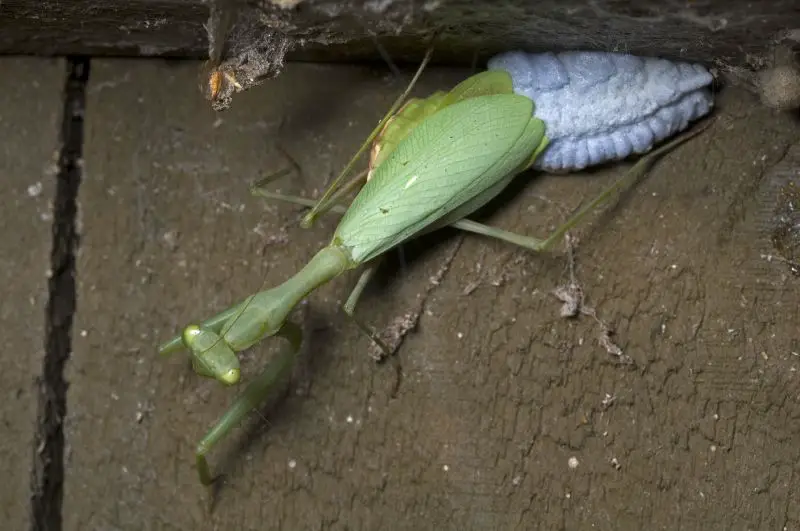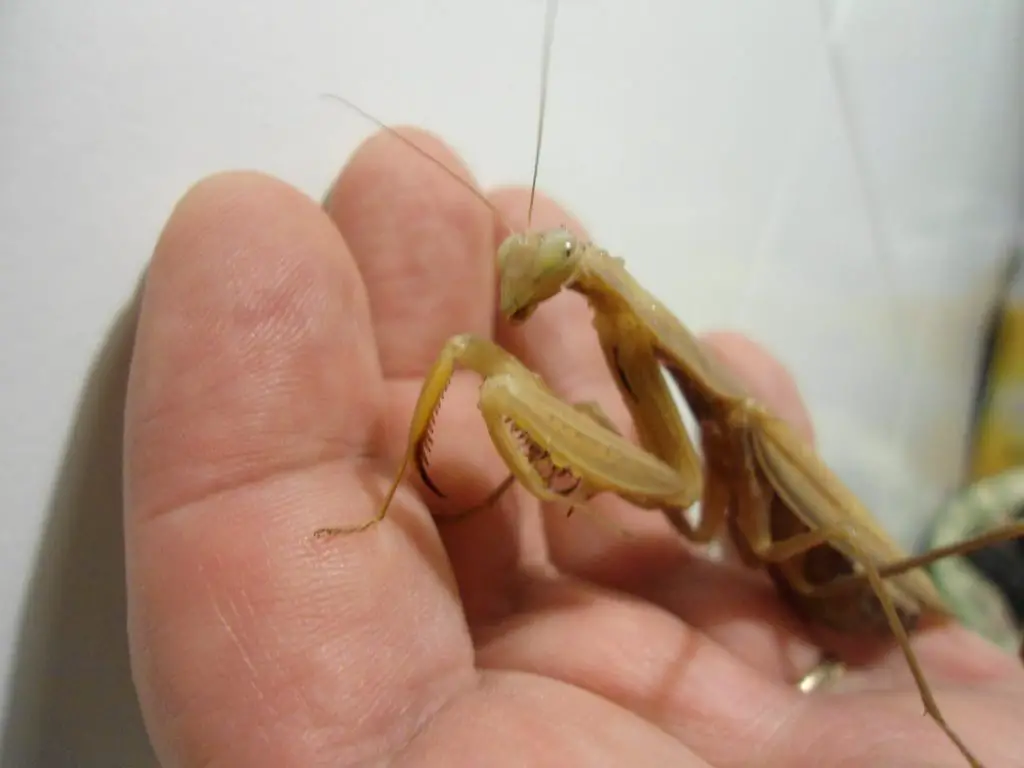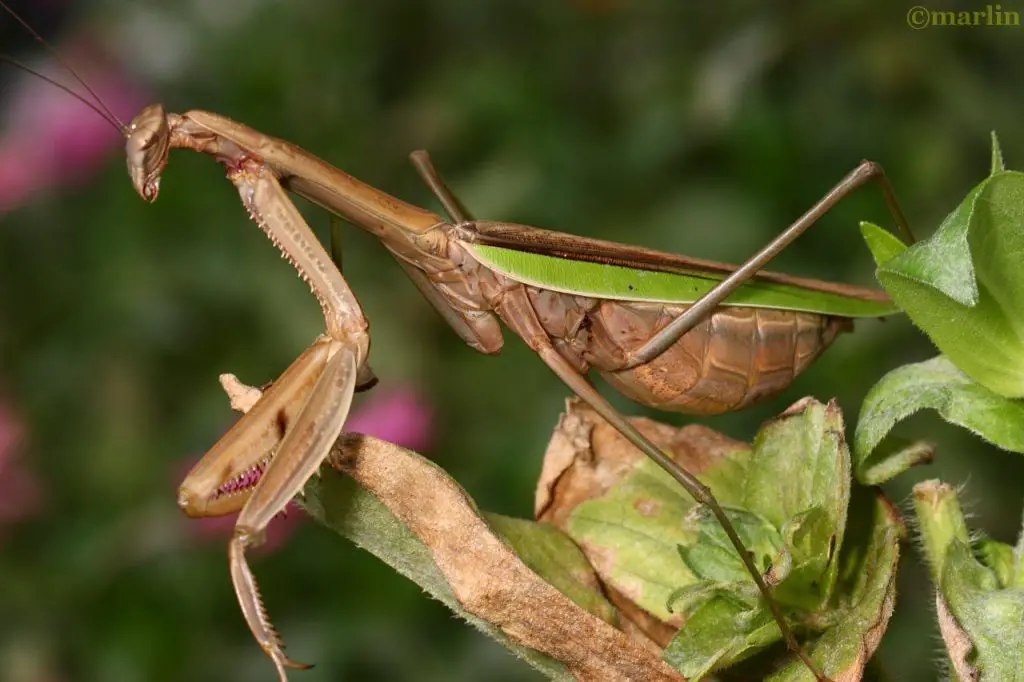Step into the enchanting world of praying mantis pregnancy and oothecae laying, where nature’s miracles unfold before our eyes. In this captivating journey, we’ll explore how female mantises carefully prepare for pregnancy after mating, crafting protective egg cases known as oothecae.
The Preparation for Pregnancy
In the realm of praying mantis reproduction, mating is a pivotal event that sets the stage for the miraculous journey of pregnancy. The significance of mating lies in its role as the crucial step that triggers the creation of new life.
When a female praying mantis mates with a male, a remarkable process takes place. During copulation, the male transfers sperm to the female’s body. Rather than immediately utilizing the sperm for fertilization, the female stores it in a specialized organ known as the spermatheca. This unique storage mechanism enables the female to retain the sperm for an extended period, using it to fertilize her eggs whenever the conditions are optimal for successful reproduction.
Following the successful mating, the female embarks on a series of pre-pregnancy behaviors that lay the groundwork for the forthcoming reproductive process. One of these essential behaviors involves the selection of suitable habitats for oothecae laying. Carefully assessing her surroundings, the female searches for safe and secure locations to deposit her precious oothecae, ensuring the best chances of survival for her offspring.
In this preparatory phase, the female displays keen instincts, often choosing hidden spots that shield the oothecae from potential predators and adverse weather conditions. Her ability to identify these ideal habitats showcases the incredible adaptability and intelligence of these maternal insects.
Oothecae: Nature’s Protective Egg Case
Oothecae, often referred to as “praying mantis egg cas,” are marvels of nature designed to safeguard the next generation of these fascinating insects. These protective structures play a vital role in the praying mantis life cycle, serving as secure incubators for the developing eggs.
An ootheca is a capsule-like casing that houses up to 250 eggs! Its shape and appearance vary among different praying mantis species, but most oothecae are elongated, resembling small, foam-like pods. The primary purpose of these egg cases is to shield the developing eggs from potential threats, including predators, harsh environmental conditions, and fluctuations in temperature.
The process of oothecae formation begins shortly after the female praying mantis has mated and stored the sperm in her spermatheca. Inside her body, she carefully packages and arranges the eggs along with a mixture of specialized substances. As these components come together, the ootheca takes shape, eventually becoming a solid and protective casing.
To harden the ootheca and give it its durable structure, the female secretes a frothy substance that surrounds the eggs. Upon contact with the air, this frothy mixture solidifies, creating a tough outer layer that shields the developing embryos. This protective coating serves as a barrier against predators, parasites, and environmental factors, effectively insulating the eggs from potential dangers.
Check our other article if you want to know how to check if praying mantis eggs are fertile.

Oothecae laying
When our beloved insect is laying oothecae we can tell that praying mantis is giving birth. Once the ootheca is ready to be laid, the female secures it to a secure surface using a specialized adhesive secreted from her body. This attachment is vital, as it ensures the egg case remains stable and protected from potential predators and environmental hazards. Selecting the right location is crucial for the survival of the offspring, as it provides the necessary shelter and resources for their development.
One female can lay more than one oothecae
Upon mating and storing sperm in their spermatheca, female mantises can utilize this stored genetic material to fertilize several batches of eggs over time. This unique ability demonstrates the adaptability and versatility of female praying mantises to ensure the continuity of their lineage under varying circumstances.
By laying multiple oothecae, female mantises can seize opportunities presented by favorable environmental conditions, resource availability, and predator absence. This approach optimizes the chances of survival for their offspring and contributes to the ongoing success of their species.
The widespread occurrence of superparasitism among praying mantises exemplifies the diverse and ingenious reproductive strategies that have evolved within this insect order. As we marvel at the adaptability and tenacity of these maternal creatures, we gain a deeper appreciation for the ingenuity of nature and the dynamic ways life perpetuates itself across the fascinating world of praying mantises.
Now lets watch this great video showing the process of oothecae laying:
How to tell if female is pregnant?
Detecting pregnancy in a praying mantis requires keen observation and attention to specific physical cues. One of the primary indicators of pregnancy is the visible enlargement of the female’s abdomen. As the eggs develop within her body, the abdomen becomes noticeably distended, assuming a rounded and swollen appearance. Additionally, pregnant female mantises may exhibit altered behaviors, becoming less active and more focused on finding suitable locations for oothecae laying.
Observing her search for potential egg-laying sites can provide further evidence of pregnancy. However, it’s essential to approach and handle pregnant mantises with care, as they may be more sensitive during this period. By attentively monitoring these signs, enthusiasts and researchers alike can identify and appreciate the remarkable journey of pregnancy in the intriguing world of praying mantises.
Do they Die After Laying Eggs?
Yes, female praying mantises do die after laying eggs. However, it is essential to note that their demise is not a direct result of laying eggs. Instead, it is primarily attributed to their natural aging process. Praying mantis pregnancy takes place towards the end of their lifecycle, and laying eggs signifies a critical stage in their reproductive journey. While the act of oothecae laying demands a significant investment of the female’s energy, she does not die immediately after depositing the eggs.
In reality, the female may live for several weeks after laying her last ootheca. Nevertheless, her age at this stage of life means that each passing day brings her closer to the inevitable end of her lifespan. The sacrifices made during pregnancy showcase the selflessness and dedication of these remarkable insects, ensuring the survival of their species even in the twilight of their lives.

Conclusion
In conclusion, the world of mantis reproduction is a realm of wonder, sacrifice, and the intricacies of nature’s reproductive marvels. These remarkable insects exhibit dedication and maternal care as they prepare for pregnancy after mating, crafting protective oothecae to safeguard their precious offspring.
Despite their eventual demise being a result of natural aging, females continue to contribute to the cycle of life, embracing their maternal instincts to secure the continuity of their species. The praying mantis serves as a captivating example of the harmonious balance between reproduction, dedication, and the inexorable passage of time in the ever-evolving symphony of the natural world.
If you found this article interesting, don’t hesitate to share it on social media!
May interest you
Rest or Roam? The Fascinating Question: Do Praying Mantis Sleep?
As we delve into the fascinating world of praying mantis, we find ourselves pondering a curious question: do praying mantis sleep? If so, how do praying mantis sleep? Like many…
Truth or myth: Do Praying Mantis Spit?
Mystical World of the insects: Praying Mantis Spiritual Meaning
In this article, we embark on a journey to delve into praying mantis spiritual meaning, uncovering its symbolic significance and exploring its presence in art, mythology, and spiritual practices. The…
